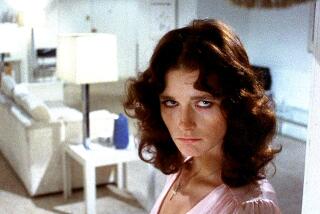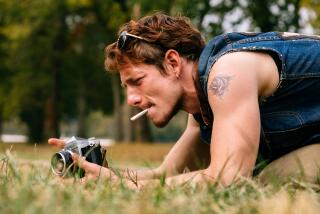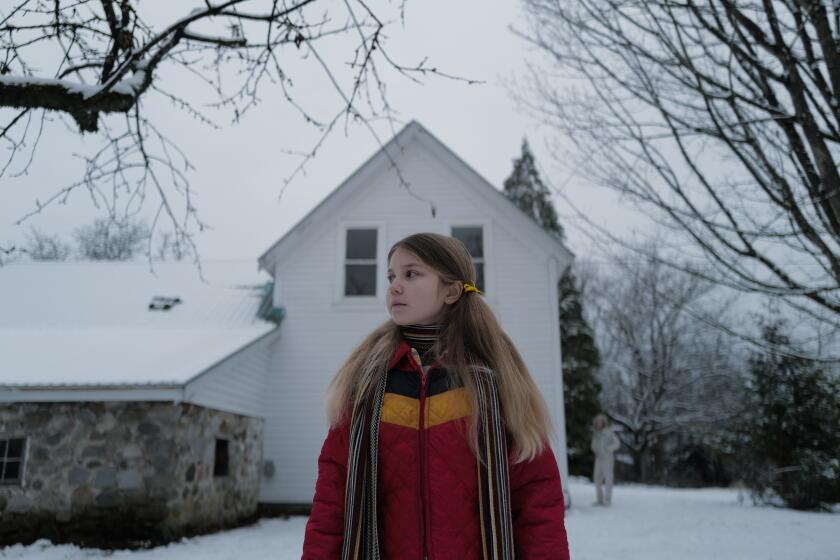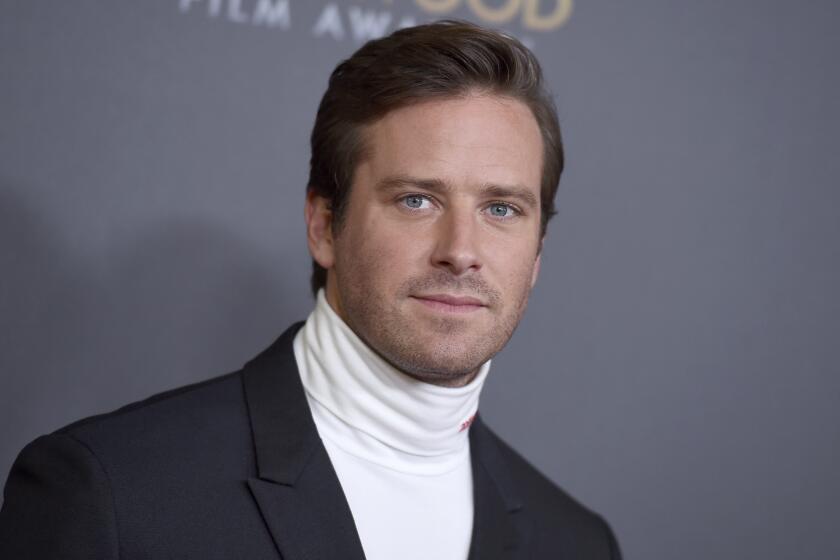In ‘Point and Shoot,’ inside the mind of an unlikely revolutionary
Growing up in Baltimore, Matthew VanDyke had few friends. He was doted on so much by his mother and grandmother he was still living in his mom’s basement in his mid-20s. The most hair-raising adventure he ever had was with a video-game console. The most significant contact he had with international conflict came when he took graduate classes in Middle Eastern studies at Georgetown University.
So it was pretty improbable that VanDyke would do what he did several years ago: leave behind his family and join the Libyan revolution.
That strange arc from soft-spoken homebody to foreign soldier--along with a larger culture of war and masculinity--are the subjects of two-time Oscar nominee Marshall Curry’s new movie “Point and Shoot.”
Playing the Tribeca Film Festival last month ahead of a potential theatrical and TV release, “Point and Shoot” is an eye-opening tale, a story of one man who--fortunately for audiences—also saw himself as a filmmaker and recorded many of his overseas experiences. (The distinction between soldier and documentarian in the age of YouTube and handheld video is another of the film’s potent through-lines.)
VanDyke’s Libyan odyssey began several years ago when, after a lifetime of doing very little out of the ordinary, he began to break out of his shell by taking increasingly adventurous solo motorcycle trips across the Middle East and Africa, leaving behind a very patient girlfriend. Then, in 2011, after seeing news of the Libyan revolution on TV, he got in touch with a hippy-ish Libyan friend he met on one of these trips and soon accepted the friend’s invitation to travel to the country and help the cause, hardly aware of what he was getting himself into.
What follows is an unexpected evolution. VanDyke, then 31, soon realizes the seriousness of his situation, and shortly after, while riding along on a kind of informal recon mission with his new Libyan friends, he is taken hostage in a pro-Muammar Kadafi ambush and imprisoned for more than five months in brutal solitary-confinement conditions. He is finally set free in a prison breakout but instead of returning home, as family and U.N. officials counsel (and as pretty much any rational person would do), he returns to fight on the front lines.
Soon he is staring death in the face in various gunfights and compromised positions, much of it seen here in some powerfully intimate footage shot by VanDyke himself.
Curry gathered and edited this material, then interspersed it with a long sit-down he and VanDyke did over several days. The soldier’s motives can sometimes be murky. VanDyke, for instance, says his experience in jail opened his eyes to the evils of totalitarianism, prompting him to stay and fight. But one rarely gets the sense of him as a hard-core ideologue. The biggest clue into his thinking comes early in the film, when he tells Curry he wanted a “crash course in manhood.”
How an educated man with no military experience or childhood aspirations to battle becomes a foreign revolutionary is indeed the key mystery of the film. In so doing, Curry--who has skillfully explored the intersection of ideology and personality in previous films such as “Street Fight” and “If a Tree Falls,” both Academy Award nominees for best documentary--explores the line between radicalism and narcissism. What makes someone take up arms on behalf of foreign interests, and what are their responsibilities and limitations if they do?
Curry said he wanted the movie to pose questions for the audience too, existential inquiries about our own willingness to take risks, of “where we should put ourselves on the spectrum of living in cubicles and putting ourselves out in the world,” he told the Tribeca audience. “I like making films that ask those questions,” he added. (His effort was validated when “Point and Shoot” won a top jury prize at Tribeca.)
Equally notable is the footage. “Point and Shoot” is a rare inside look at guerrilla warfare and NATO bombardment of an Arab Spring revolution that an embedded journalist would rarely capture, allowing viewers access not only to the mind of a revolutionary but of a revolution.
Such access, though, comes at a price. VanDyke’s erasing of the line between journalism and combat that has served reporters through the decades not only complicates his own mission (in one scene he finds himself holding a camera and not a gun as pro-Kadafi forces attack) but raising questions about the nature of war journalism for the rest of us. If everyday people can become reporters, what does that mean when everyday people are engaged in a war.
Despite the horrors he endured, VanDyke says he has adjusted reasonably well since returning. He told filmgoers at Tribeca he had relatively few nightmares when he got back and none today, largely because he took up the challenge later in life. “Had I gone to Libya straight out of grad school I probably would have been pretty screwed up right now,” he said.
It would be easy to see VanDyke’s story as either youthful folly or noble idealism. But Curry and his subject don’t settle on anything that simple, instead allowing the viewer to judge his actions--and how they might proceed under similar circumstances-- for themselves.
So did VanDyke succeed in his crash course in manhood? Curry poses the question to him at the end of the film, then, cutting away before VanDyke replies, leaving it open. When it comes to questions like ideology and masculinity, there are no easy answers.
More to Read
Only good movies
Get the Indie Focus newsletter, Mark Olsen's weekly guide to the world of cinema.
You may occasionally receive promotional content from the Los Angeles Times.











